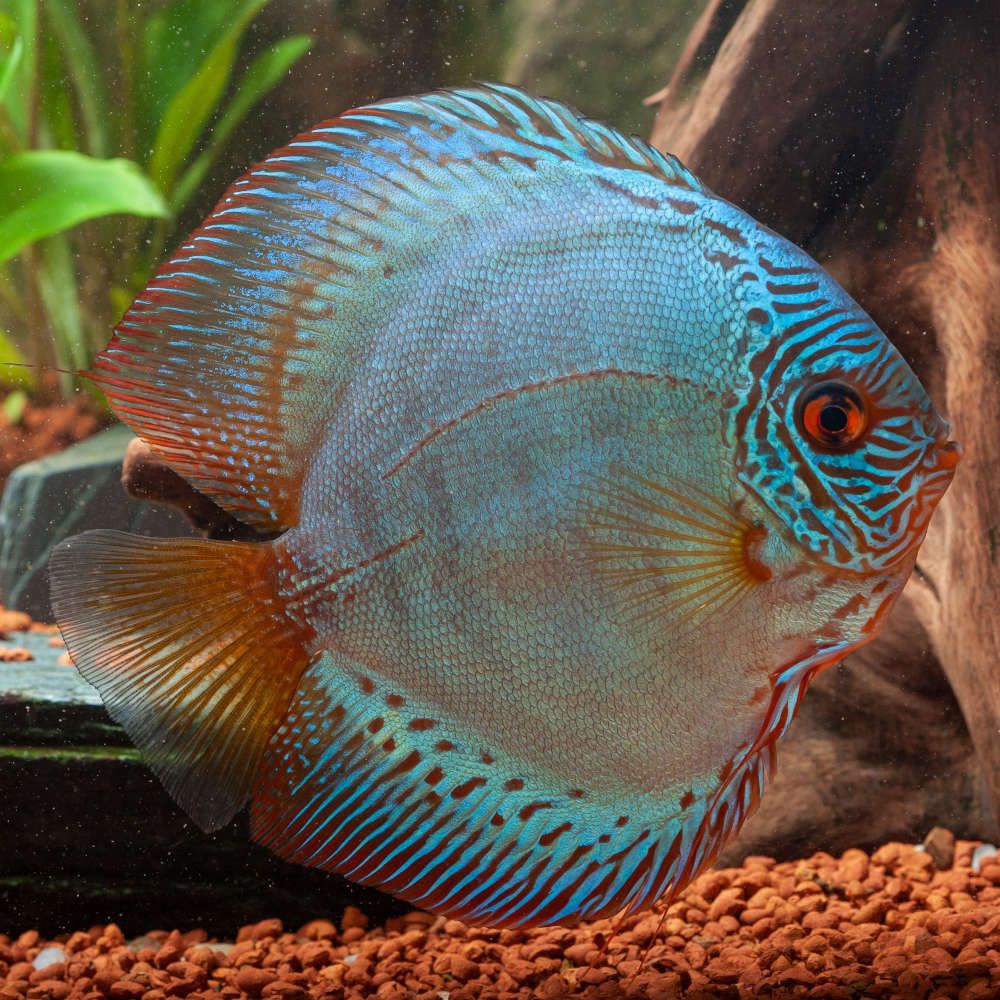If you want to add some extravagant bright fish to your freshwater aquarium, the discus fish is at your service with its regal appearance. After all, there’s a reason why this species is called the “King of Aquarium.”
With the right expertise and care, the no-fretting gluttonous fish will amp up your mood after a long day. It never creates trouble with other species, either.
What are Discus Fish?
Discus fish is a bright colored fish which is also known as the king of the aquarium.
| Origin | Eastern and Central Amazon basins, East of the confluence of River Negro and River Solimoes, South America |
| Order | Cichliformes |
| Family | Cichlidae |
| Scientific Name | Symphysodon aequifasciatus |
| Common Names | Blue Discus, Brown Discus, Royal Blue (sometimes, even just “Discus” and “Green Discus”) |
| IUCN Red List Status | Least Concern |
| Appearance | Yellow to orange discoid laterally compressed body, rounded fins with blue or purple outline |
| Size | Up to 23 cm (9.06 in) in captivity, up to 14 cm (5.5 in) in wild |
| Lifespan | Up to 10 years, but 12 years with quality care |
| Temperament | Peaceful, schooling, but territorial among conspecifics |
| Tank Level | Middle-level dwellers |
| Water Temperature | 79-86 °F (26-30 °C) |
| pH Level | 5.5-7.5 |
| Water Hardness | Up to 12 dGH |
| Care Level | Intermediate to Expert |
| Minimum Tank Size | 125 gallons for 6 |
| Tank Environment | Vegetated tank with lots of swimming and hiding space |
| Diet | Carnivorous |
| Tank Mates | Own school of 6, any other timid, friendly, non-fin nipping fish |
Which family does Discus Fish belong?
The Symphysodon, or collectively discus fish, is a pretty popular South American cichlid genus among aquarists due to their colorful and uniquely patterned appearance. For this, the trade industry for this genus is quite over the top.
This genus is classified in the Heroini tribe under the Cichlidae family of Cichliformes order. And it houses mainly three discus fishes – blue, red, and green discus.
They sound like color variants of the same fish but are taxonomically completely different based on their patterns, size, fin types, and even natural habitat.
While this article will primarily focus on blue discus (Symphysodon aequifasciatus), for now, let’s get a sneak-peek into the other two as well!
What are the Types of Discus Fish (Symphysodon Genus Species)?
While the blue discus is the most popular, the other two aren’t too far behind. So, let’s check them out quickly!
1. Red Discus (Symphysodon discus)
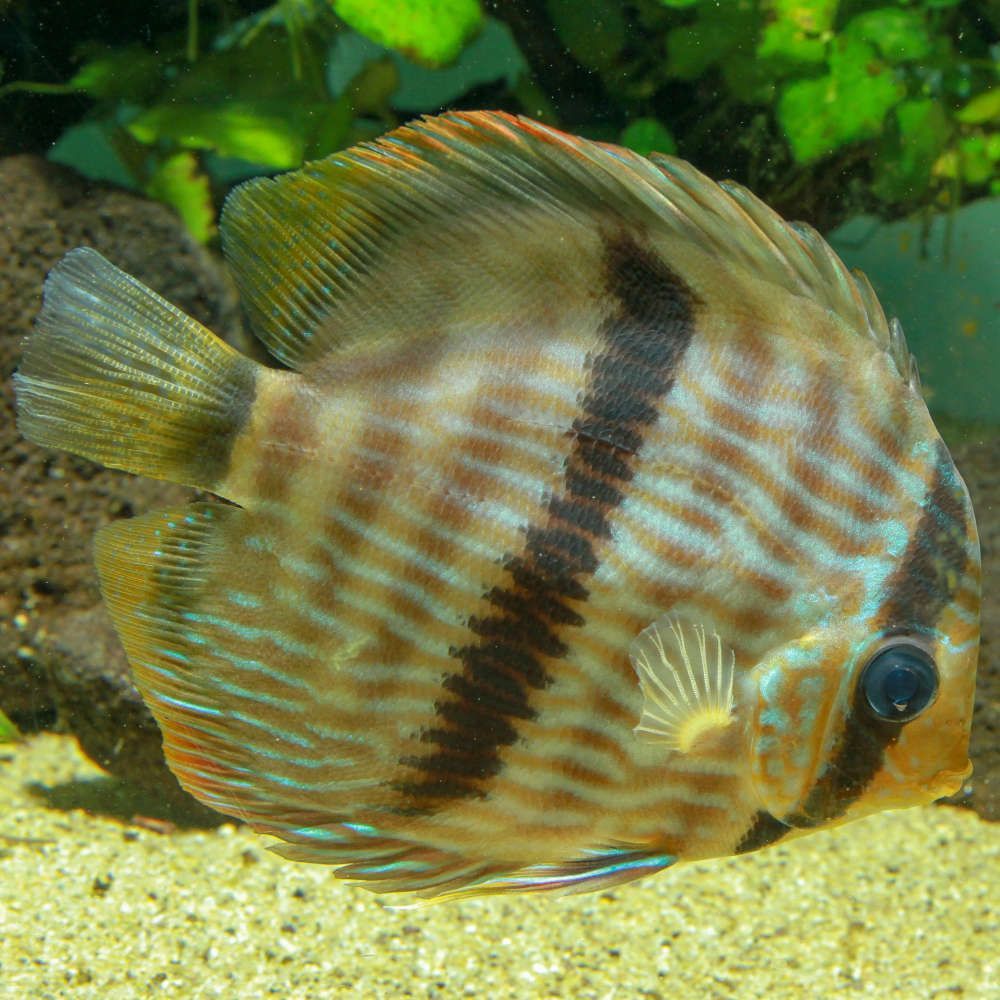
- Natural Habitat: Mouth of Negro River, lower Trombetas River, and lower Abacaxis River, Brazil, South America
- IUCN Red List Status: Least Concern, 2018 Assessment
- Other Common Names: Heckel Discus, Pompadour Fish
- Size: Up to 20 cm (7.87 in)
- Lifespan: Up to 10-15 years
- Tank Level: Middle dwellers
- Temperament: Peaceful, gets stressed easily, territorial
- Diet: Primarily carnivores
- Tank Mates: Own school, calm and similar-sized bottom dwellers
- Minimum Tank Size: 125 gallons for 6
Red Discus is the type species of Symphysodon genus.
Like all discus fish, it has a disc-shaped, highly compressed body. The ventral fins are thin and long. On the other hand, the dorsal and anal fins are large and rounded. The red discus also has a delta tail fin.
It usually has a yellowish-orange body with red and white marks. Sometimes, you can also notice faint vertical bars on its sides. But there are other colors and patterns available as well.
The young fry of this species prefers to feed on the mucus secreted by its parents.
2. Green Discus (Symphysodon tarzoo)
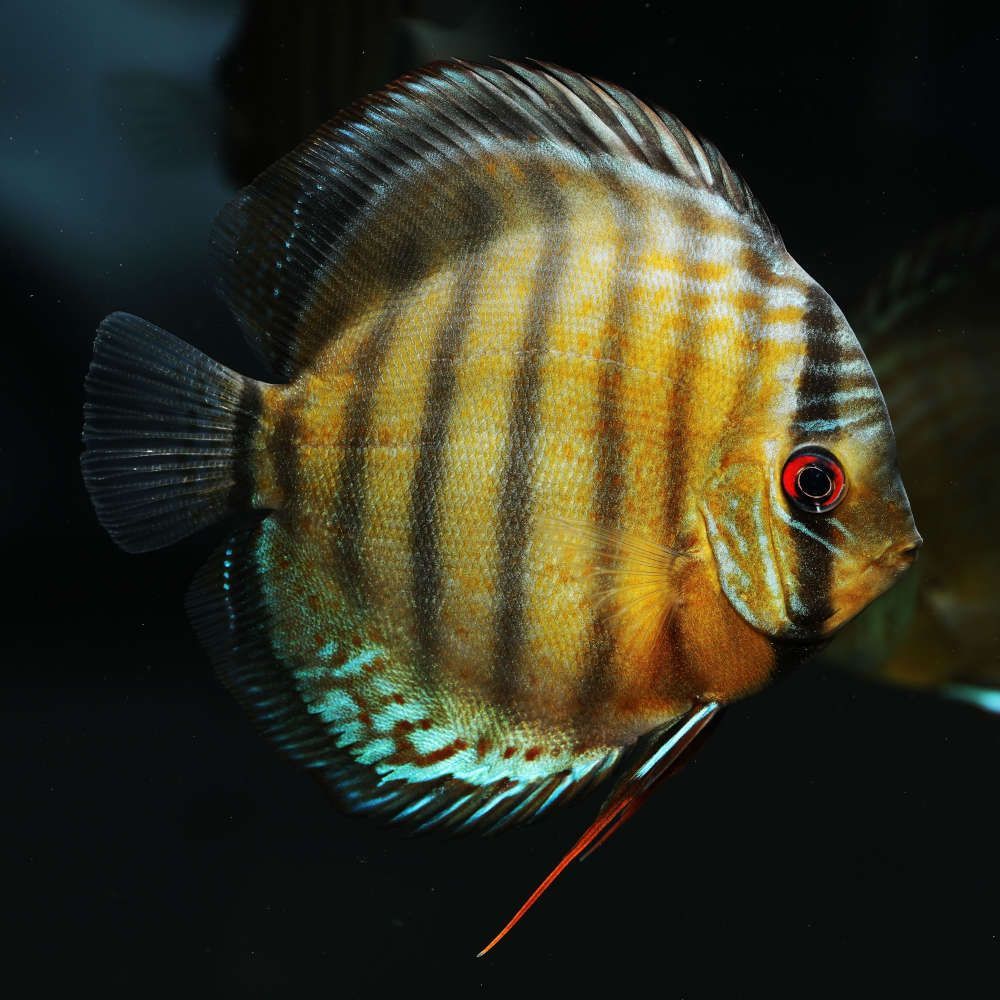
- Natural Habitat: Lake Tefe, Jutai, Purus, Madeira, and Tefe Rivers, Brazil, Colombia, and Peru, South America
- Size: Up to 13.2 cm (5.2 in)
- Lifespan: Up to 10-14 years
- Tank Level: Middle dwellers
- Temperament: Peaceful, shy, but territorial
- Diet: Primarily carnivores
- Tank Mates: Own school, calm and similar-sized bottom dwellers
- Minimum Tank Size: 125 gallons for 6
The discoid flat-bodied fish is quite similar to its genus members. The green discus is yellow around the sides and green near its head, bottom, top, and fins. The fins also have an orange border and there are vertical bars on its sides.
Its main distinguishing feature is the red dots on both sides of its body and fins.
This is the rarest of all the discus fish and is only available in specialized clubs for hobbyists.
What is the Natural Habitat of Blue Discus Fish?
The blue discus is naturally available in the freshwater regions of eastern and central Amazonian basins in blackwater, clearwater, as well as whitewater of South America. It mainly covers the nations – Brazil, Peru, and Colombia.
The species is also available on the eastern side of the Solimoes and Negro River confluence. It especially prefers to swim about in the forest wetlands among roots and rocky crevices.
These brightly colored fish have also been spotted in Tapajos, Uatuma, and Nhamunda Rivers.
How does a Discus Fish look?
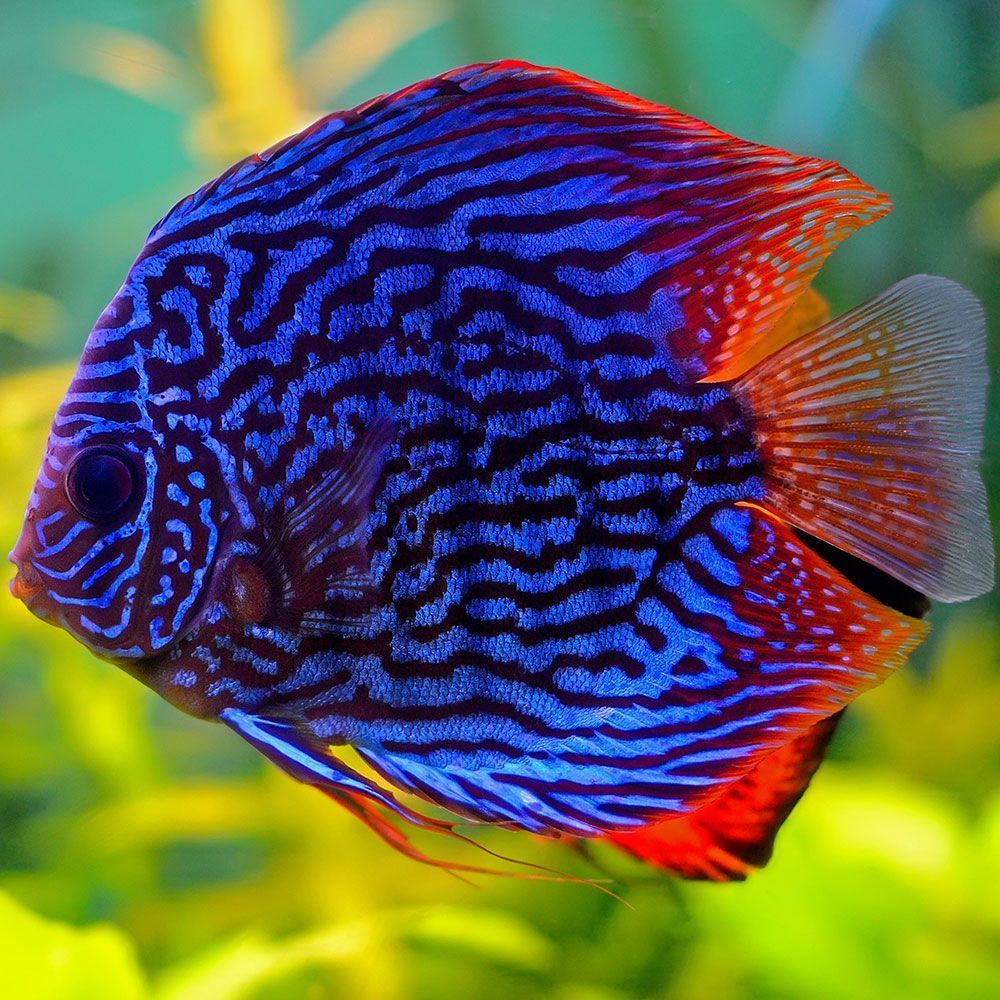
Now, if you are curious about how the most popular discus fish looks, let’s get right to it!
What is the Size of Blue Discus Fish?
In the wild, the fish has been known to grow at most 14 cm (5.5 in). But some tank-bred specimens are reported to be as long as 23 cm (9.06 in).
What is the Color of Discus Fish?
The naturally found blue discus has an orange or yellow body with vertical stripes on both sides. Its fins have a blue or purple shading on the edges and red eyes. However, different variants may also have different colored eyes.
Due to selective breeding, many color variants of this fish are available and some even have unique patterns. The main ones are blue diamond, blue snakeskin, pigeon blood, red turquoise, red marlboro, red cover, and red cover discus.
Did you know: Till now, there are 31 colors/patterns of discus fish, including both naturally found (3 main species) and ones created from hybridization.
What are the Features of Discus Fish?
This discus fish has a laterally compressed and disc-shaped body. Its body is the tallest in the middle region, and the fins are big and rounded.
In my experience, depending on the diet, water parameters, and stress, the fish changes colors to express different emotions.
If it feels happy and confident, it exhibits bright colors. When it senses danger, it dims the brightness and tries to blend into its environment.
How does a male Discus fish differ from a female?
It’s extremely hard to tell apart male and female blue discus. However, during the breeding season, the adult male exhibits a pointy genital papilla, and the females look rounder and fuller.
Some even report that the males might be slightly larger than the females, have thicker lips, and a bit more pointed dorsal fin. However, these differences are hard to notice for most beginner aquarists.
How do Discus Fish behave?
The diurnal species is extremely peaceful and shy. Due to weak swimming skills, they often stay close to hiding spaces to flee from other active and playful fish.
However, like any other cichlid, there is always competition and territorial attitude among discuses.
Especially, males exhibit a pecking order during the mating season. This means that the brightest and largest male fish is the most dominant of the lot and gets food and mates first.
The smaller males are starved for food and even don’t get mates. That’s why it’s better to keep at most two males in one school.
What is the Lifespan of Discus Fish?
Home aquariums can sustain the fish for about 10 years. But according to my experience, sustaining it for 12 years with the best care is possible.
Author’s Note: If you ever notice a singled-out discus fish from the school, relocate it to another tank with similar-sized discus.
How to take care of Discus Fish?
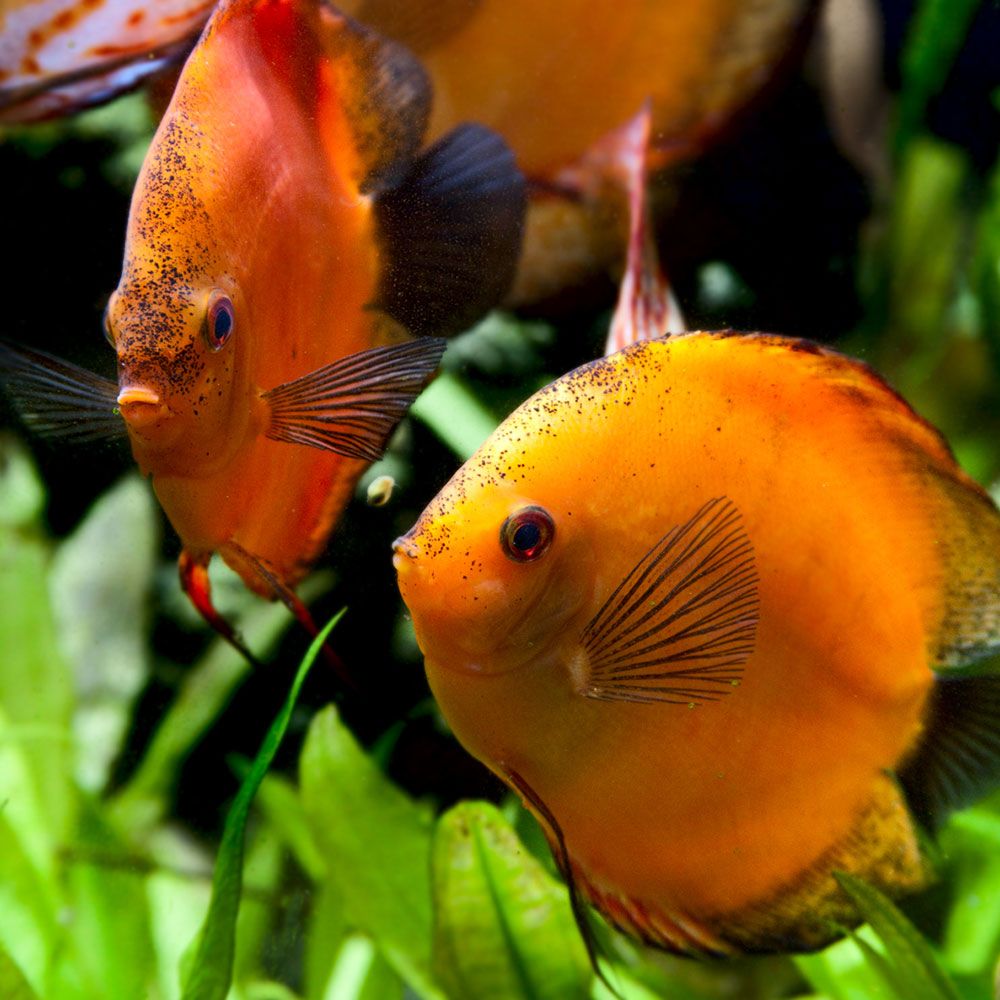
This flamboyant fish is pretty tricky to care for. So, to ensure that the fish accompanies you for the longest period, follow these guidelines.
What is the Tank Size of Discus Fish?
This fish must always be housed with a minimum group of 6. For that, you need a minimum 125-gallon tank.
What is the Water Chemistry for Discus Fish?
Next, you must focus on your tank’s water conditions as it dramatically influences your discus’ health.
- pH Levels:5.5-7.5
- Water Temperature: 79-86 °F (26-30 °C)
- Water Hardness: Up to 12 dGH
- Carbonate Hardness: 1-4 dKH
- Ammonia: 0 ppm
- Nitrite: 0 ppm
- Nitrate: Below 10 ppm
What is the Tank Environment for Discus Fish?
Your next goal is to make your discus feel at home and secure. For that, follow these steps!
Do we need Substrate for Discus Fish?
In its natural habit, the blue discus loves to stay near crevices of rocks to hide. So, make it feel at home by using a mix of soft fine sand and rocks. However, make sure you go for rounded, smooth rocks to protect them from getting hurt.
Which Plants are needed for Discus Fish?
Use floating plants to disperse light in your tank. You can use any South American plant that survives in the ideal water temperature range for this fish.
Some choices are anubias nana, dwarf Lily bulbs, microsword grass, corkscrew vallisneria, jungle vallisneria, water onions, java fern, etc.
What types of lights are needed for Discus Fish?
Use dim lighting to help the fish feel secure while acclimatizing to the new tank. Once they get accustomed, you can use a bit brighter light. This will also keep the tank well-lit to showcase the beauty of your discus.
What Aquarium Décor is needed for Discus Fish?
Since the fish prefers to be near the banks to hide among roots, use bogwood, driftwood, or any other kind of branches. You can also put in slanted smooth surfaces in case your discus randomly reproduces.
Which filter is needed for Discus Fish aquarium?
Get a strong, reliable, and oxygenating filter with a capacity of clearing 4-5 times the volume of your tank.
What is the Tank Water Flow Rate needed for Discus Fish?
Slow to medium water flow rate will help as the species is not a fast swimmer.
Fish Care Tip: If you don’t take care of the water parameters properly, the discus may turn black. Make sure you perform 40% water changes weekly to avoid this. Especially, never let the temperature reach as high as 91 °F (33 °C).
What is the food that Discus Fish eat?
The bright body color of the discus depends on its diet. Since it is carnivorous, you must feed it a variety of meaty food like:
- Brine shrimp
- Bloodworms
- White worms
- Choppped beef or turkey heart
- Cyclops
- Mysis
- Bosmiden
- Daphnia
- Mussels
- Red, white, or black mosquito larvae
- Krill
- Spirulina
Try to mostly feed it live food from the above list. In rare cases, you can also keep it on a frozen meaty diet of similar food. Rarely, the fish may also accept flakes and pellets. Ensure you feed it a healthy mix of all to prevent malnutrition.
The species often form a pecking order, so check if a particular fish always fights to get fed first. If you notice one or more of your fish eats at last or doesn’t get enough food, feed it/them every two hours from morning till dusk.
What are the Tank Mates for Discus Fish?
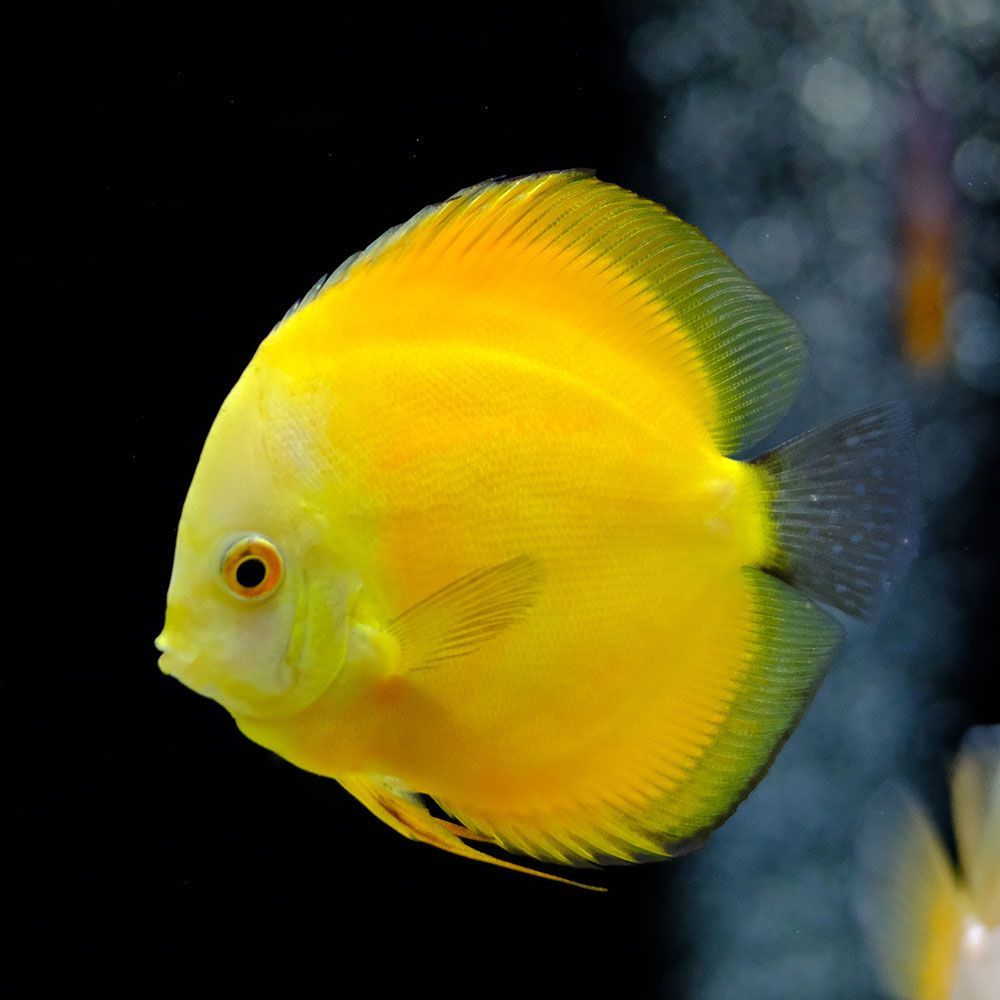
The ideal buddies for the fish are any other peaceful and calm fish like these:
- Clown loaches
- Bristlenose plecos
- Hatchetfish
- Corydoras
- Apistogramma
- Bolivian rams
- German blue rams
- Similar-sized shrimps
Which Tank Mates to Avoid for Discus Fish?
Be cautious of the following kinds of fish to protect your discus and its tank mates:
- Any fish that may produce bacteria in the tank, like gouramis.
- Large and active fish, as they stress and even hurt your discus, like freshwater angelfish and big plecostomus.
- Quick swimmers and fin nippers like tetras and silver dollars.
- Small fish and other species that fit its mouth, cherry barbs, and shrimps as the discus may eat it.
Some other bad choices are:
- African cichlids
- Oscars
- Zebra danios
- Arowanas
What are the Common Diseases associated with Discus Fish?
The greatest challenge of housing these wonderful fish is their high vulnerability to diseases. So, be cautious and try to prevent the following.
| Disease Name | Causes | Symptoms | Treatment |
|---|---|---|---|
| Columnaris | Bacterial Infection | White or grey spots, frayed fins, inactivity, appetite loss | Maintain healthy water conditions, use antibiotics, reduce stress |
| Ich | Protozoan parasite | Flashing, white spots, inactivity, appetite loss | Add aquarium salts or ich medicine, slowly increase the water temperature within the safe limit of the fish |
| Fin rot | Bacterial Infection | Disintegrated or frayed fins, redness of fins or fin color loss, inactivity, appetite loss | Maintain good water parameters, remove physically injurious objects – sharp or coarse things, add antibiotics |
| Blackening | Stress, bullying, malnutrition, other diseases | Darkened body of the fish, inactivity, appetite loss | Quarantine to treat illness, add more discus to diminish aggression, perform regular 25% water changes |
| Hole in the head | Protozoan parasite | Hemorrhage on head, red feces, inactivity, appetite loss | Swift antifungal treatment |
| Velvet disease | Parasitic infection | Flashing, rapid breathing, color change, fin clamped to skin, skin peeling | Raise water temperature, dim or turn off lights for some days, add aquarium salt |
| Dropsy | Infection, stress, water quality issues | Bloated stomach, scales protruding, ulcers, skin redness near fins and vents | Incurable and extremely contagious Don’t introduce new fish in the tank or relocate the existing ones to other tanks |
Quick Tip: Always keep proper kits handy and test the water parameters regularly. Since most of its diseases are due to water concerns, this will help to a considerable extent.
How to breed Discus Fish in a tank?
Before you try to breed the fish, understand the following:
- The fish isn’t monogamous. So, you need to house a harem of multiple female fish with one male fish.
- The species isn’t easily differentiated by gender, so you must seek an expert for that.
- Discus fish sexually matures only when it’s a year old.
For these reasons, breeding the species is challenging but not impossible. So, if you can take proper measures to choose one sexually mature male and multiple mature females, follow these steps:
How to prepare a tank for Discus Fish breeding?
Take a 40-gallon breeder tank and maintain the following stable conditions
- Water Temperature: 80-86 °F (27-30 °C)
- pH Level: 6
- Carbonate Hardness: Below 5 dKH
- Ammonia: 0 ppm
- Nitrites: 0 ppm
- Nitrates: Below 3 ppm
- Conductivity: 150-250 microsiemens
You must also incorporate spawning supports like large smooth inclined slates, stones, or cones. Decorate the tank with appropriate branches and plants.
Mating Induction
Put the breeding harem in the new tank. If you can replicate the perfect breeding conditions, female fish (sometimes even the male) will start cleaning preferred surfaces and lay 2mm diameter eggs. The male fish will follow them and fertilize them all.
During incubation, the parents ventilate the eggs and care for them.
Fry Development
Once the eggs hatch, the young fry stick to the parents’ bodies. They consume the mucus secreted by the parents’ skin. So, you must never try to isolate the young fry.
When the young fish stops sticking to the parent fish’s bodies, that’s the cue to feed them baby brine shrimp.
Breeding Tip: To maintain stable breeding conditions in the tank, use osmosis water.
What are the Buying Tips for Discus Fish?
While buying blue discus, only pick 6 cm or longer specimens. Any smaller, and it becomes pretty hard to sustain it.
Always buy a similar-sized school of discus fish together so they all grow at the same rate, which reduces bullying and stress due to pecking order.
A word from FishInAquarium
A school of discus fish can turn the looks of any tank from bleh to FABULOUS. Needless to say, you will never get bored of these colorful swimmers.
With that, if you feel you’ve learned something new and are more prepared to get this fish, definitely share it with your aquarist friends. And if you or your friends have some queries, feel free to send a mail, and we’ll be back with solutions!

